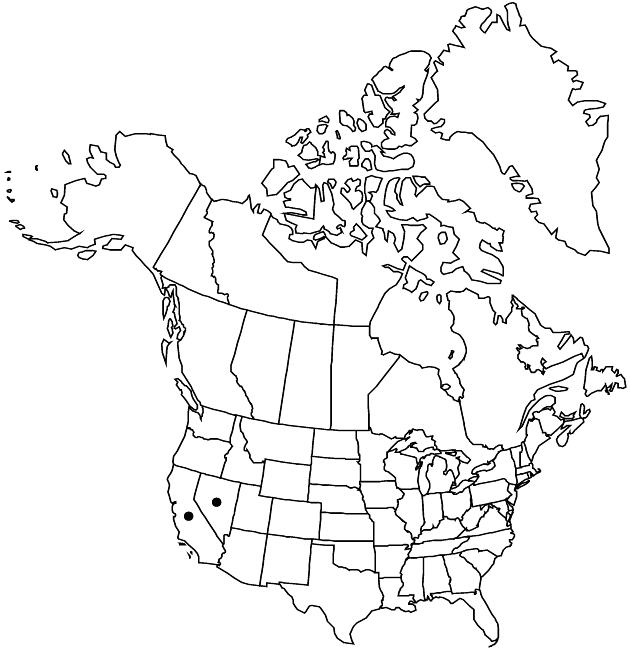Difference between revisions of "Senecio scorzonella"
Pittonia 3: 90. 1896.
FNA>Volume Importer |
imported>Volume Importer |
||
| (6 intermediate revisions by 2 users not shown) | |||
| Line 6: | Line 6: | ||
|place=3: 90. 1896 | |place=3: 90. 1896 | ||
|year=1896 | |year=1896 | ||
| + | }} | ||
| + | |special_status={{Treatment/ID/Special_status | ||
| + | |code=E | ||
| + | |label=Endemic | ||
}} | }} | ||
|basionyms= | |basionyms= | ||
| Line 11: | Line 15: | ||
|name=Senecio covillei | |name=Senecio covillei | ||
|authority=Greene | |authority=Greene | ||
| − | }}{{Treatment/ID/Synonym | + | |rank=species |
| + | }} {{Treatment/ID/Synonym | ||
|name=Senecio covillei var. scorzonella | |name=Senecio covillei var. scorzonella | ||
|authority=(Greene) Jepson | |authority=(Greene) Jepson | ||
| + | |rank=variety | ||
}} | }} | ||
|hierarchy=Asteraceae;Asteraceae tribe Senecioneae;Senecio;Senecio scorzonella | |hierarchy=Asteraceae;Asteraceae tribe Senecioneae;Senecio;Senecio scorzonella | ||
| Line 29: | Line 35: | ||
|elevation=1600–3500 m | |elevation=1600–3500 m | ||
|distribution=Calif.;Nev. | |distribution=Calif.;Nev. | ||
| − | |discussion=<p>Senecio scorzonella is restricted to high elevations in the Sierra | + | |discussion=<p><i>Senecio scorzonella</i> is restricted to high elevations in the Sierra <i>Nevada</i>–Cascade uplift and the White Mountains of California; it barely enters adjacent <i>Nevada</i>.</p> |
|tables= | |tables= | ||
|references= | |references= | ||
| Line 38: | Line 44: | ||
-->{{#Taxon: | -->{{#Taxon: | ||
name=Senecio scorzonella | name=Senecio scorzonella | ||
| − | |||
|authority=Greene | |authority=Greene | ||
|rank=species | |rank=species | ||
| Line 52: | Line 57: | ||
|publication title=Pittonia | |publication title=Pittonia | ||
|publication year=1896 | |publication year=1896 | ||
| − | |special status= | + | |special status=Endemic |
| − | |source xml=https:// | + | |source xml=https://bitbucket.org/aafc-mbb/fna-data-curation/src/2e0870ddd59836b60bcf96646a41e87ea5a5943a/coarse_grained_fna_xml/V19-20-21/V20_1226.xml |
|tribe=Asteraceae tribe Senecioneae | |tribe=Asteraceae tribe Senecioneae | ||
|genus=Senecio | |genus=Senecio | ||
Latest revision as of 19:59, 5 November 2020
Perennials, 10–40(–50) cm (rhizomes stout). Herbage closely lanate to floccose-tomentose, unevenly glabrescent. Stems usually single, rarely clustered. Leaves reduced distally; obscurely petiolate; blades oblanceolate to lanceolate, (4–)6–12+ × (1–)1.5–3 cm, bases tapering to winged petioles, margins dentate to denticulate (denticles dark, cartilaginous; mid and distal leaves smaller, bractlike). Heads (10–)14–24(–30+) in corymbiform arrays. Calyculi 0 or of 1–3+ lance-deltate to lance-linear bractlets (mostly less than 1 mm). Phyllaries ± 13, 3–5 mm, tips usually black. Ray florets usually ± 5, sometimes 0; corolla laminae 5–8(–10) mm. Cypselae glabrous.
Phenology: Flowering summer.
Habitat: Open wooded areas and subalpine meadows
Elevation: 1600–3500 m
Discussion
Senecio scorzonella is restricted to high elevations in the Sierra Nevada–Cascade uplift and the White Mountains of California; it barely enters adjacent Nevada.
Selected References
None.
